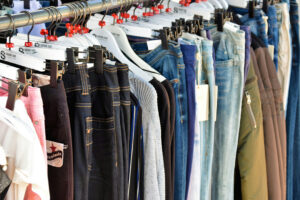By Justine Irish D. Tabile, Reporter
CONSUMER spending on clothing and footwear is estimated to grow by 10.5% this year, despite a decline in the second quarter, analysts said.
Brice Dunlop, associate director for consumer and retail at BMI, said that although clothing and footwear are essentials, consumers can “quickly cut back on the item in the short term to make sure their budgets are met.”
This is in comparison to the two other big components of the average household’s budget, which are food and drink or housing and facilities, “where spending is a lot stickier in the short term.”
“Consumer spending on clothing and footwear is very price-sensitive, as consumers often always have lower-priced close substitutes available,” Mr. Dunlop told BusinessWorld by phone.
The Philippine Statistics Authority (PSA) reported that the only sub-item under household final consumption expenditure to post negative growth in the second quarter was clothing and footwear, which declined by 4.8%.
“The wide variety of cheaper clothing and footwear retail, combined with inflationary pressures, will have led to the contraction over the second quarter,” Mr. Dunlop said.
“However, we do not believe this weakness will persist over the year. We still hold a positive outlook for the Filipino consumer and forecast household spending on clothing and footwear to grow 10.5% year on year over the year,” he added.
Accounting for inflation, he estimates the sub-category’s real growth at between 5% and 6% over the year.
“(This will) mostly be driven by the positive outlook for disposable income levels,” he added.
Asked to comment, Bain & Co. partner Yukiko Tsukamoto said that the decline in spending on clothing and footwear is something to watch out for.
“The decline in clothing and footwear will be an indicator to watch if Philippine consumers are managing their discretionary spending amid inflation,” she said.
“But other spend data indicates that Philippine consumer spend continues to grow overall,” she added.
According to the PSA, household spending grew 4.6% in the second quarter, slowing from the 5.5% growth in the same quarter in 2023.
The growth was driven by goods and services; transport; and housing, water, electricity, gas and other fuels, it added.
